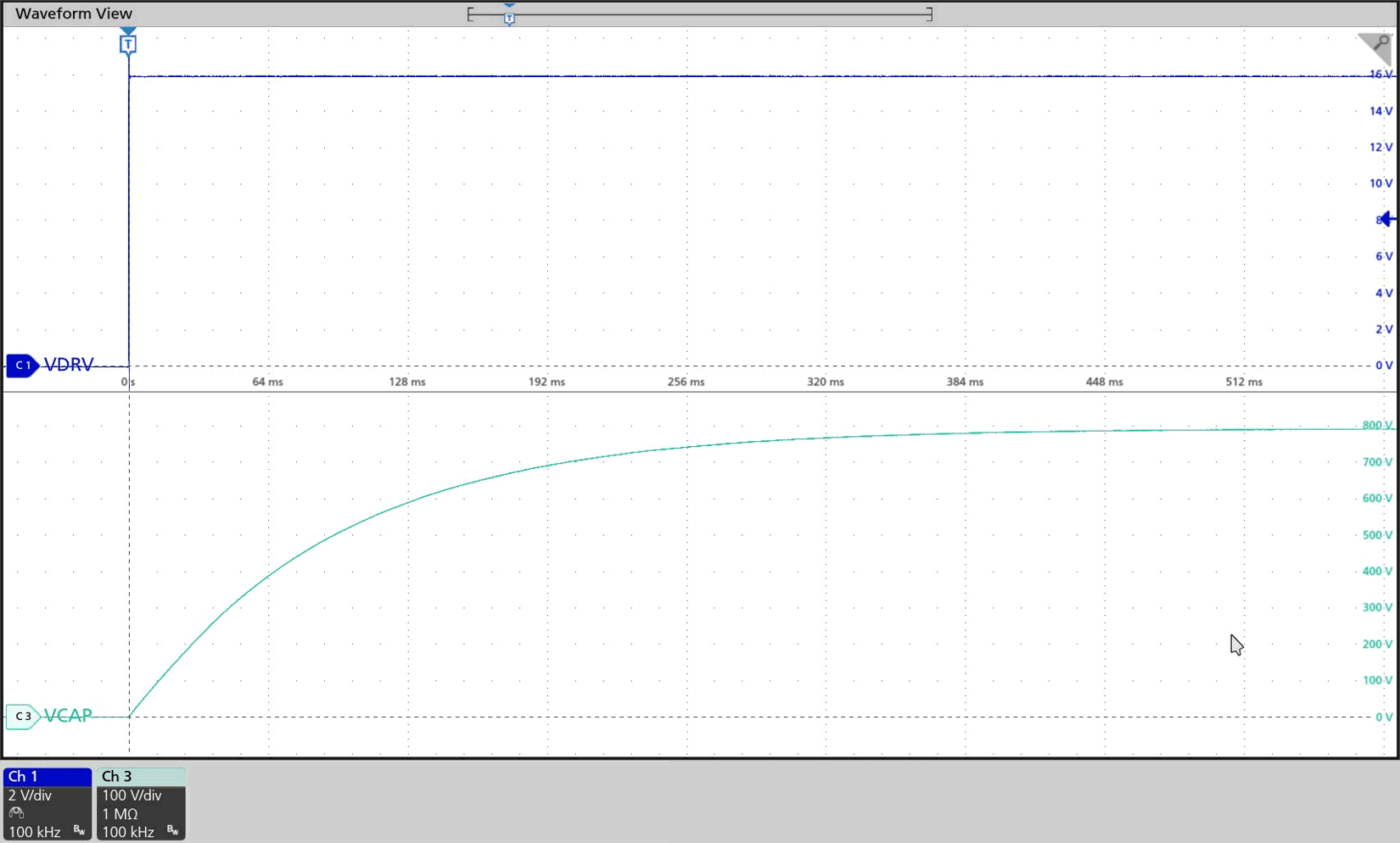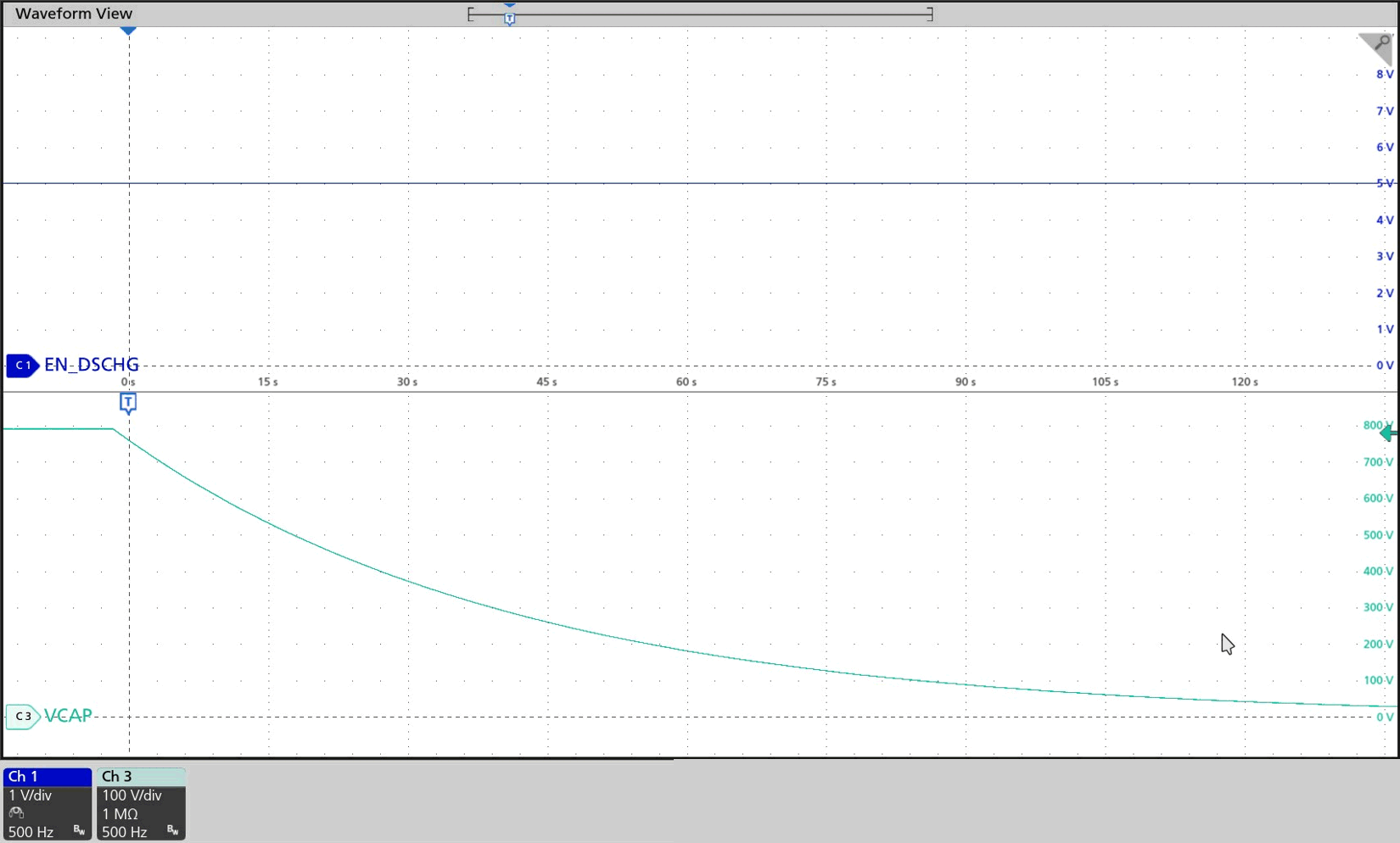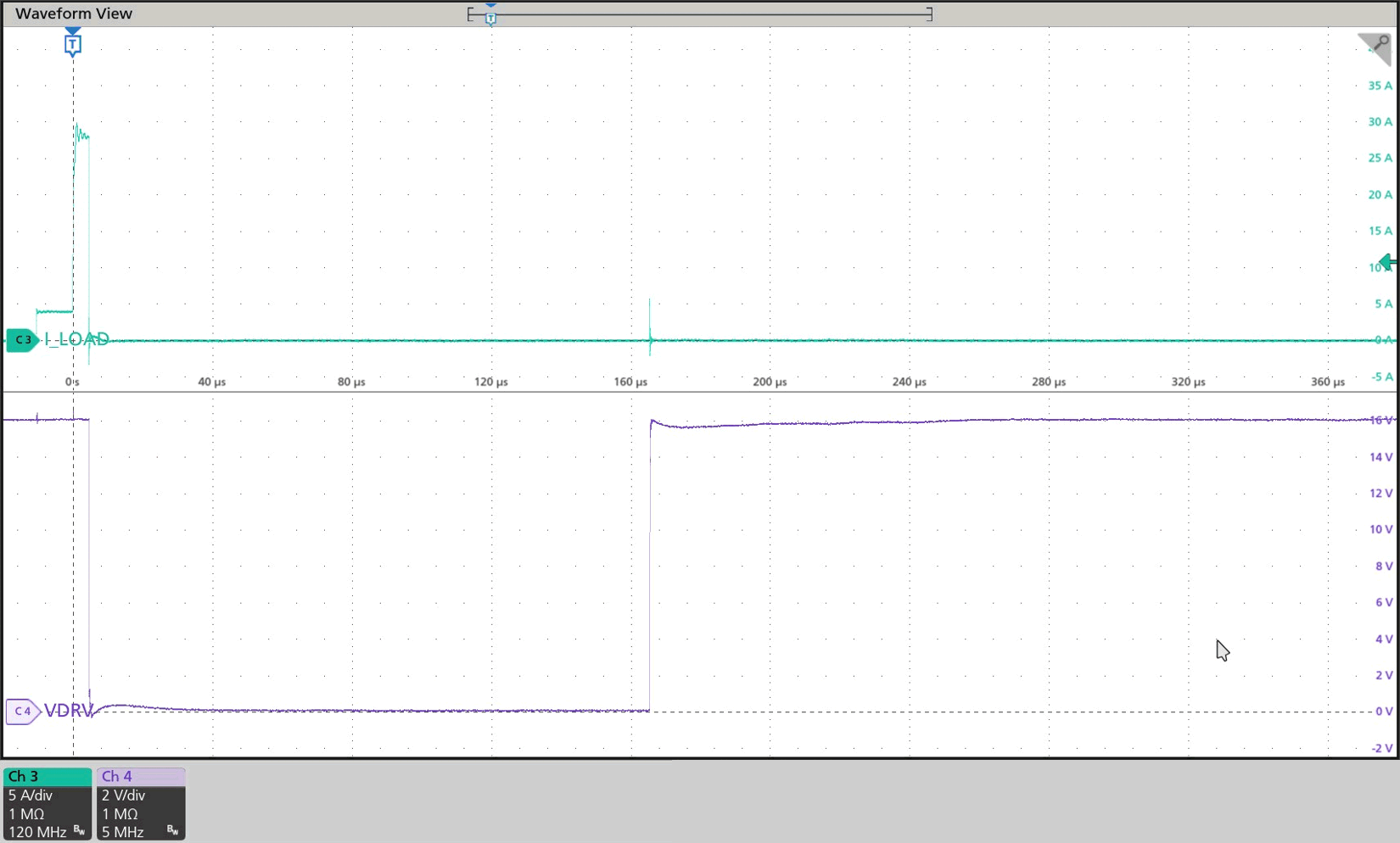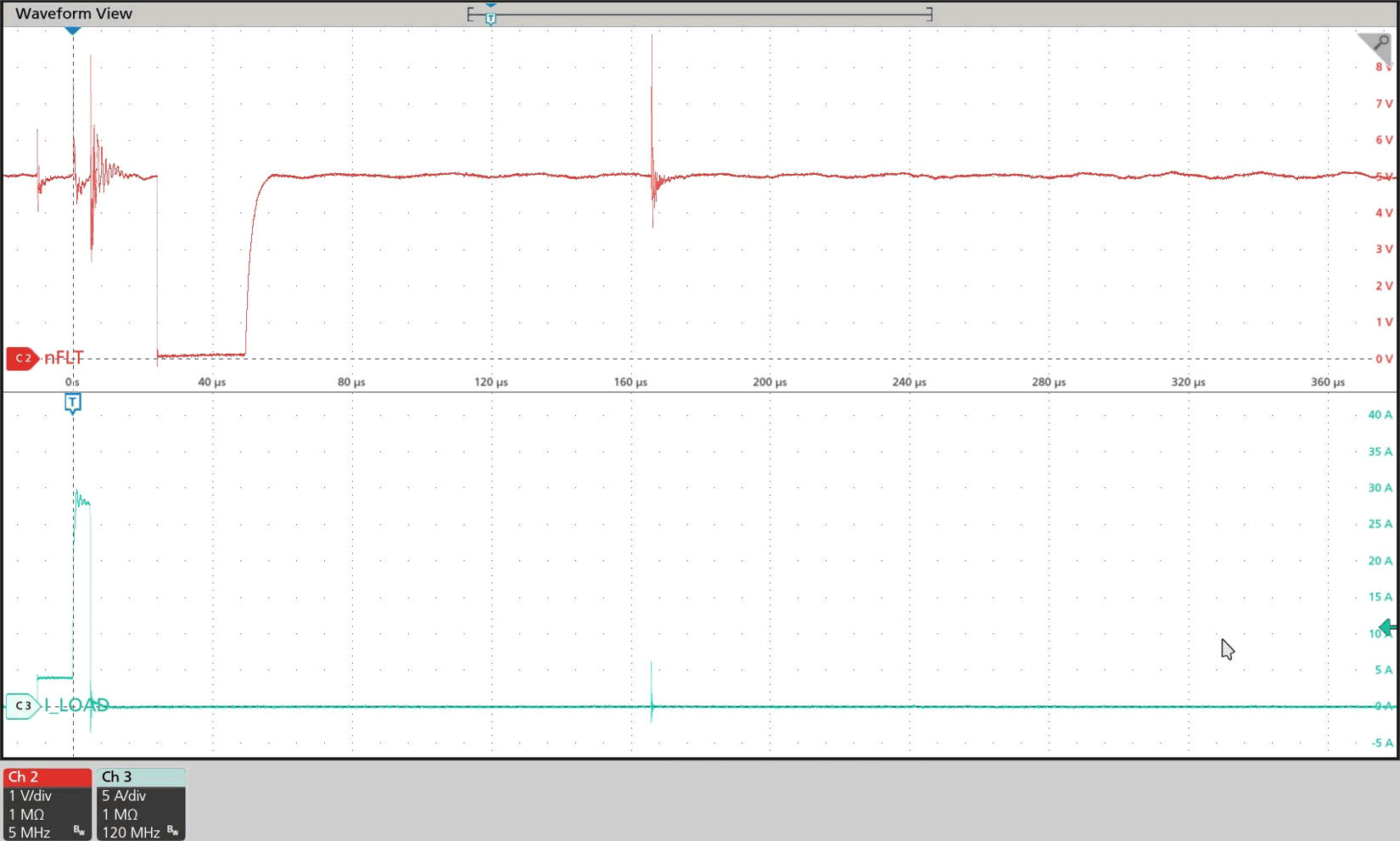TIDUF73 September 2024
3.3 Test Results
Figure 3-3 shows a typical precharge cycle and Figure 3-4 a discharge cycle.
- VDRV is the drive pin on the secondary side of TPSI3100-Q1
- VCAP is the voltage across the capacitor bank
- EN_DSHCG is the enable signal for the TPSI2140-Q1
 Figure 3-3 Precharge Cycle
Figure 3-3 Precharge Cycle Figure 3-4 Discharge Cycle
Figure 3-4 Discharge CycleFigure 3-5 shows the VDRV pin disabling after the current has exceeded the 25A limit. After the auto-recovery period has passed, the drive pin re-asserts. Similarly, in Figure 3-6, the nFLT pin on the primary side reports the fault by pulling down after 30μs passes. This pin is pulled back up after another 30μs passes.
 Figure 3-5 VDRV Disable and
Re-enable
Figure 3-5 VDRV Disable and
Re-enable Figure 3-6 Primary Side Fault
Reporting
Figure 3-6 Primary Side Fault
Reporting